A swamp cooler, or evaporative cooler, is much cheaper to run than a traditional air conditioner.
On average, the running cost of swamp coolers is only 15 to 35% of an air conditioner of the same size.
They are not always the most efficient at cooling your home. This article will take you through a few simple ways to boost the impact of your swamp cooler, without having to purchase a new one.
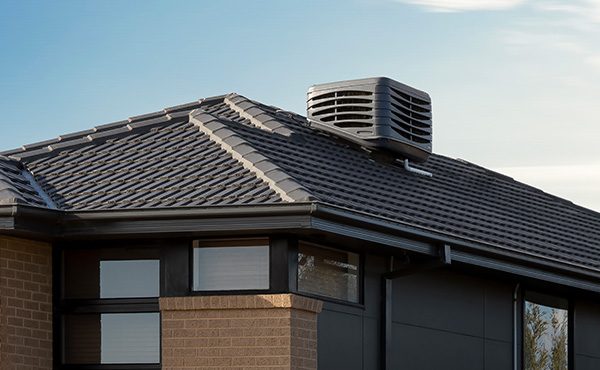
Photo credit: rinnai.com.au
How Does a Swamp Cooler Work?
Swamp coolers work by taking in warm air from their environment and cool it. When you turn your cooler on, the water supply valve connected to your plumbing brings water into the reservoir.
There is a float sat on the surface of the water which rises. At a certain level, this sends a signal to the valve to shut off.
The pump will then activate and pull water through the internal distribution lines and deposit this onto the pads.
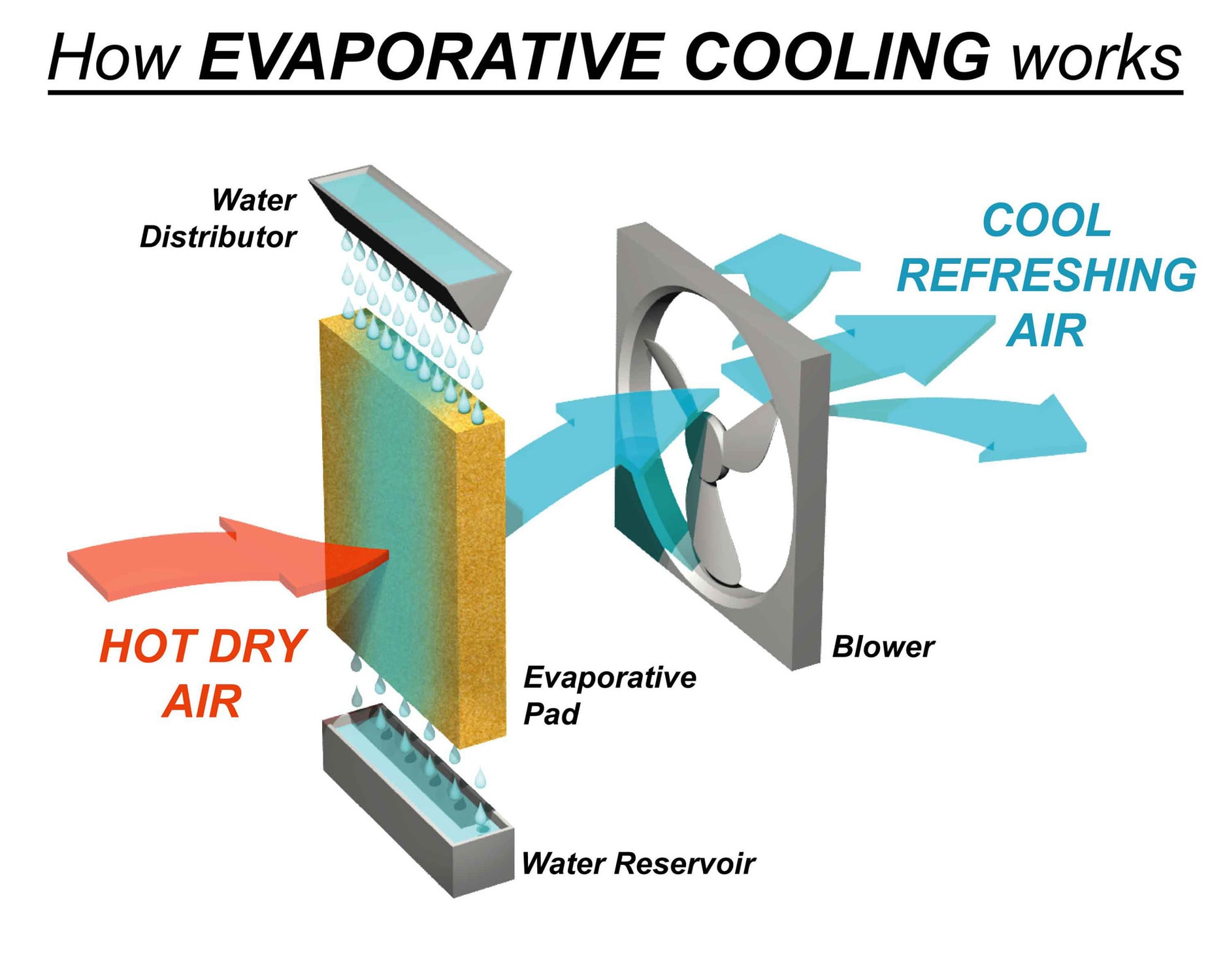
Photo credit: vankool.com
The warm air is then drawn through the wet pads as the blower motor turns on. The moisture in the pads cools the air as it passes through, cleaning it at the same time.
This is a process known as evaporative cooling. As humans, we cool our bodies in the same way, via sweat.
The blower then turns, forcing the now cold air out of the cooler, through the ducts. The air then travels through your vents and into your house.
How to Make a Swamp Cooler Colder
Here are some great ways to cool the air better with an evaporative cooler:
Replace the Blue Sponge Pads
These do not tend to absorb water as well as you would hope. A good and cheap replacement is to pull them out and place aspen wood in the gap left. This is much better at absorbing water and allows the cooler to work more efficiently.
Avoid Using it on Humid Days
Swamp coolers work by causing water to evaporate into the air. On humid days, there is a lot of water in the air. This moisture means that evaporation is not efficient and so the temperature does not reduce as significantly.
These styles of coolers work much better in hot, dry climates than in humid ones.
Open Your Windows
Swamp coolers work more efficiently when there is a constant supply of fresh air. By opening windows, you increase the airflow in the room and this boosts the power of the swamp cooler.

In addition, opening a window will release any humidity that has built up in the room from the swamp cooler itself. This will let the moist air out of the room, and allow drier air from the outside to come in.
You do not need to open the windows particularly wide. An inch of space should be plenty to allow a breeze in and boost the functionality of your cooler.
Invest in a Dehumidifier
This is a good solution if you do not want to open your windows to allow some moisture out of the room. The dehumidifier will extract this from the air and collect the water in a reservoir where it sits until you empty the tank.
This can help to make a room feel cooler naturally. The less humidity in the air, the more heat your body can lose naturally through sweating. A good idea is to put the dehumidifier near the air intake vent on your cooler.
This will mean that the driest air possible goes into the cooling pads. In turn, this will improve the evaporation process inside the cooler and make it run colder and more efficiently.
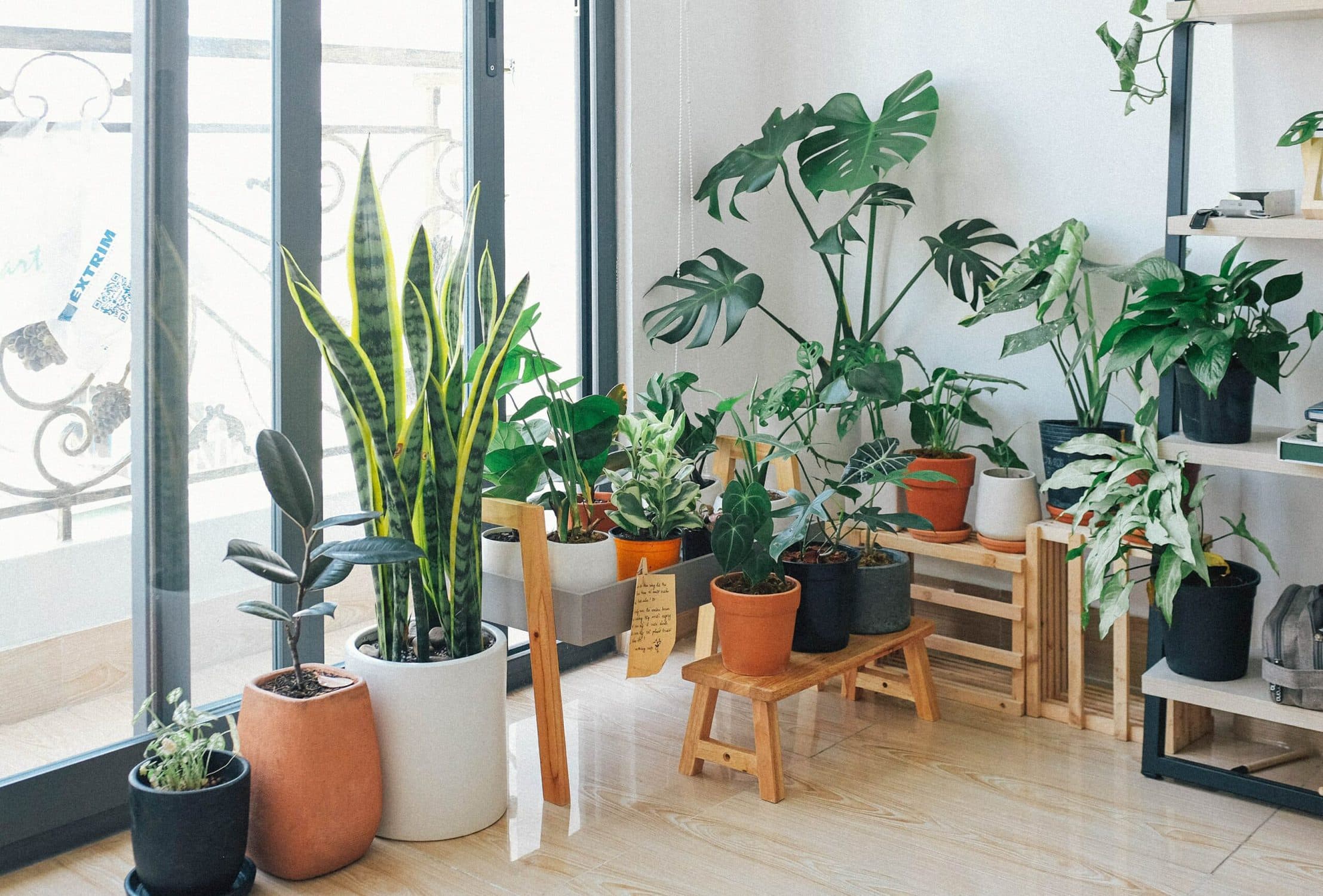
Add Some Plants to Your Home
Houseplants are very good at taking in moisture from the air. Some good plants to grow are cacti, succulents, yucca, euphorbia, aloe, bromeliads, air plants, peace lily, Boston fern, and English ivy.
As these plants tend to grow in drier climates where they cannot necessarily get moisture from the soil, they have evolved to take in water from the air.
Use a Portable Swamp Cooler
In addition to the larger swamp coolers which are designed to be plumbed into your home and remain stationary, you can also purchase portable, smaller coolers. The downside to these is that they can only efficiently cool one room at a time.
The upside to this is that you can move the cooler about your house. You should pay attention to the square footage of your rooms and use a cooler with a roughly matching capacity.
Change Where It Sits
Another benefit of these coolers is that you can adjust the direction in which they are blowing air. This means that you can target areas that you sit in regularly, ensuring that you are comfortable no matter the temperature.
Allow the Pads Time to Get Wet
When you first turn on your swamp cooler, the evaporative pads are likely to be dry. This is especially true if the cooler has not been used for an extended period. It is likely to take around 15 minutes to saturate the pads sufficiently with water.
You should ensure the water tank is full when you turn on the fan. It is also a good idea to leave the fan off until the evaporative pads are fully soaked. This reserves energy and ensures cold air is being circulated.

Photo credit: newair.com
Use Cold Water
Room temperature water is the most efficient at evaporating in a swamp cooler. Studies have shown that water from the cold tap (at about 50 degrees Fahrenheit) is the optimal water temperature for swamp coolers.
It is shown that warmer water causes the cooler to be less efficient. Water with added ice also does not improve cooler performance. This is because the water cannot be evaporated until the ice has melted, which takes time.
You can make the air directly in front of your swamp cooler colder briefly by adding ice, but this will not last.
Clean Your Cooler Regularly
Your cooler will be performing optimally when it is clean and in good condition. Checking it regularly allows you to notice early on if something is broken, damaged, or malfunctioning.
At a minimum, you should clean your cooler before first use and when you are putting it away in storage. You should also make a point of cleaning and checking over your cooler at least once in the middle of the usage period.
Do not place your cooler into storage before it is completely dry.
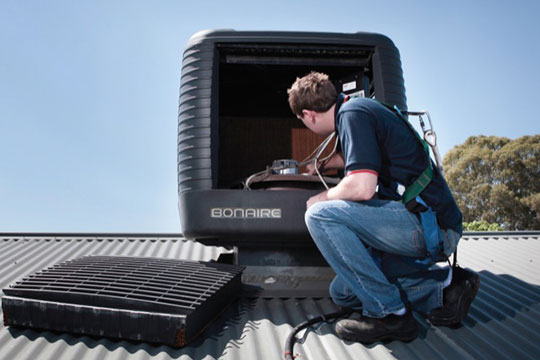
Photo credit: sharpe-ers.com.au
How Do You Clean a Swamp Cooler?
Before attempting to clean a swamp cooler, ensure the water supply has been cut off and the cooler is unplugged.
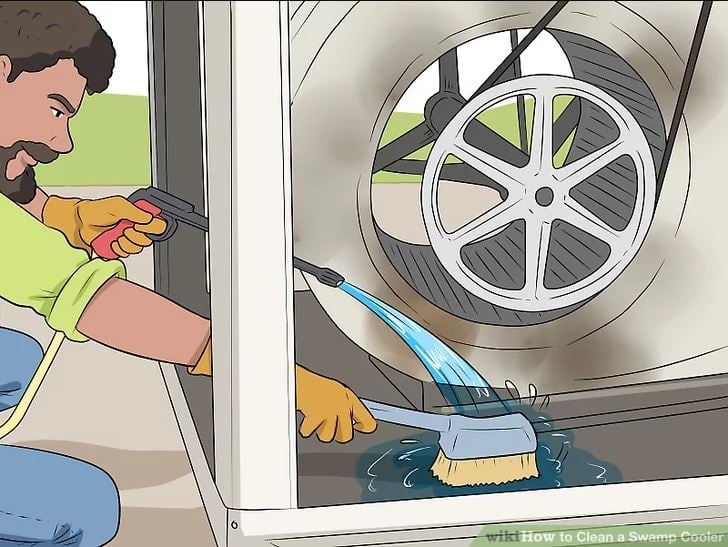
Photo credit: wikihow.com
Take off the vent panels and remove the water pads from the inside. Drain any residual water by removing the drain plug.
Scrub the interior of your swamp cooler vigorously with a stiff-bristled brush. This should loosen any dirt on the surface which you can then vacuum up. If you notice any cracked tubing you will need to replace it.
If you are doing a regular clean, simply wash the tank out with warm water and dish soap. If you are doing a deep clean, fill the water tank with white vinegar and allow it to work for an hour.
Rinse the tank well. Scrub off any residual dirt with a washing-up brush. Rinse again.
Add a few drops of lubricating mechanical oil, such as SAW 20, to the fan and the motor. Take this opportunity to check the tension of the fan belt. If the tension is too slack, use the motor bolts to adjust it.
Take out the old water pads, cutting if necessary to remove them.
Scrub the frame with a wire brush if there is a limescale buildup. If you wish, you can paint the swamp cooler with a specially designed protectant.
Cut some new pads and place them where the old ones sat.
Turn the water supply back on and allow the water tank to fill up again. Ensure the water cooling pads are getting sufficiently wet.
Put the panels back on the swamp cooler and attach well. Attach the swamp cooler to the power supply and check the fan and pump are functioning correctly.
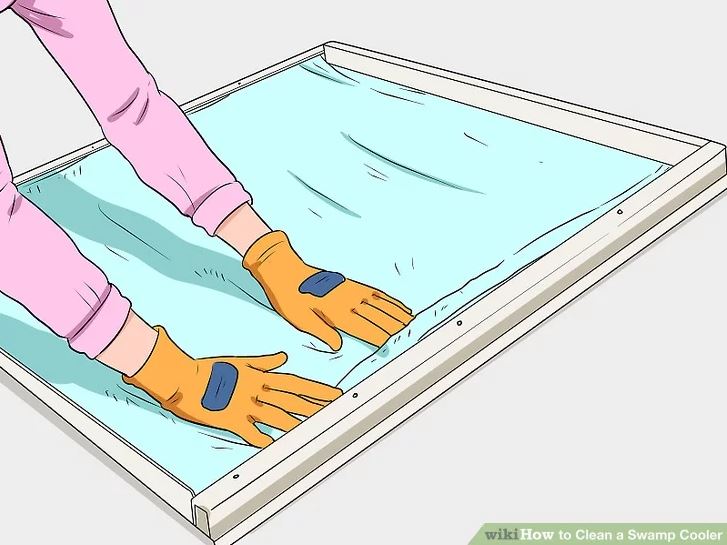
Photo credit: wikihow.com
Is There a Way to Get Rid of the Musty Smell?
You can make your essential oil spray. Find a spray bottle and fill it with white vinegar.
Choose your favorite scent of essential oil. Some good options are lavender, peppermint, and lemon. Add 15 drops of the oil to the bottle of white vinegar. Shake gently to combine the liquids.
Keep this on hand and spray after every cleaning, or when you notice a funny smell.
